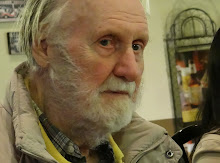Since the majority of our readers are probably too young to have experienced the days when full-sized dance bands reigned supreme in the popular music world, we can only consider them unfortunate for having missed out on a brief but glorious age. Those years from approximately 1934 up until the close of the second world war remain a treasured memory in this fellow’s eyes. Its sudden decline is personally viewed as comparable in historical significance to the 1929 stock market crash and Soviet Russia’s downfall many moons afterward.
The music genre of that fabled era had actually originated late in the nineteenth century, but was pretty much limited back then to entertaining riverboat passengers or saloon and brothel patrons, quite often on piano only. The gradual progression to the early 1920s brought on numerous multi-instrumental groups, who had found a new home in the country’s recent innovation, the speakeasy. Their output sounded a bit raw much of the time, with individual members tending to strive more for originality than note-playing unison. In any event, the attentive listening public still consisted mainly of unlawful drinkers and bawdy house clientele.
By the latter 1920s, however, as evidenced by the orchestral works of Duke Ellington, Cab Calloway, and Paul Whiteman, much of the raggedness had been smoothed out. Such refinement continued into the mid-1930s, at which point a big bang suddenly occurred, helped considerably by the advancing development of radio, along with a clarinet-wielding bandleader named Benny Goodman’s bursting into prominence.
Benny’s outpourings hit the proverbial jackpot, and in virtually no time, scores of similar outfits began to spring up like mushrooms. Jazz, a term bearing an obscene connotation, quickly became relabled “swing”, and all hell proceeded to break loose across the land. The more youthful congregation felt an enthrallment bordering on sheer ecstasy, with a universal clamor for this purportedly new musicianship style. The age of fourteen-plus instrument bands had come up like more thunder ever seen from China ‘cross the bay.
Goodman’s superb clarinet artistry popularized that particular instrument no end. Additionally, the flashy stickwork and facial mugging of his drummer Gene Krupa introduced a new role for the tub-thumpers. They quickly became heroic figures, no longer mere providers of beat support for the horn blowers. Benny had also hired a chap named Lionel Hampton, who converted the hitherto unknown and unappreciated vibraphone into a longlasting modern music element.
While the kids of the realm reveled in their day-to-day enthrallment over the likes of Goodman, the Dorseys, Glenn Miller, Artie Shaw, Woody Herman, and the rest, their forbears viewed the swing exponents with downright scorn. The parental generation, a collective entity which hadn’t yet stopped mourning the Titanic, considered such output as Satan’s own doing, or more simply “just noise”. How did those whippersnappers dare play a tune other than note-for-note the way it had been written? Wasn’t the rendering of Loch Lomond and other such semi-sacred pieces with a bouncy beat virtual blasphemy? Mercy, this sacrilege couldn’t go on!
Nevertheless, it did. Benny Goodman’s 1938 concert held at Carnegie Hall became a monumental contribution to modern music. The entire realm of ultraconservative thinking was shattered in a single evening.
By way of an aside, that enraptured gang of youthful fandom would eventually grow up to condemn rock music one fine day, just as their predecessors had frowned upon the big bands and their swinging ways years earlier. Like the man said, sic transit gloria mundi.
Looking back again on that brief but glory-laden period, the standard orchestra complement of reeds, brass, and rhythm instruments also featured a pleasant-to-gaze-upon girl singer, a good-looking male counterpart, perhaps a band member who doubled as a comedic or belt-it-out vocalist, and even a supplementary warbling trio or quartet. Down Beat and Metronome, the two leading popular music industry magazines, staged annual reader polls to select their favorite outfits, individual sidemen, and balladeers.
Bands traveled by chartered bus from city to city, offering lone club or dance performances, then immediately hopping off to the next engagement. This modus operandi became known as giving one-night stands, whose definition bore no resemblance to our more modern, somewhat quickie romance connotation.
We can’t really say that World War II caused the big band age’s downfall. The demise had to be inevitable for whatever reasons. By 1946, it was no longer as practical or profitable to lug a gang of musicians across the country night after night. The demand for mellow and brassy swing numbers had dimmed in relation to the supply. The mass hysteria suddenly switched to the likes of Frank Sinatra and his fellow crooners.
Yes, individual vocalists had now taken center stage, many having emerged from the big bands to continue on their own. However, the instrumental chaps didn’t just give up and go home. Goodman, Duke Ellington, Count Basie, Woody Herman, Harry James, Gene Krupa, Stan Kenton, and others remained intact for a long while, with either their full crews or perhaps having cut them down to small combos. Still, things could never be the same again. The era of perpetual madness had passed. The output of these once-deified people brought only reminiscences, not the so-called real thing anymore.
Although that illustrious age will never return, we can at least thank heaven for today’s CDs, which have replaced the old scratchy, highly fragile phonograph records, and offer reprocessed jazz masterpieces galore. Those among us old enough to have reveled in those times when the first words uttered to a schoolmate each morning would be “Did you hear Glenn Miller last night?” are thus able to relive the pleasures of an unforgettable period.
Saturday, September 12, 2009
Subscribe to:
Post Comments (Atom)

No comments:
Post a Comment